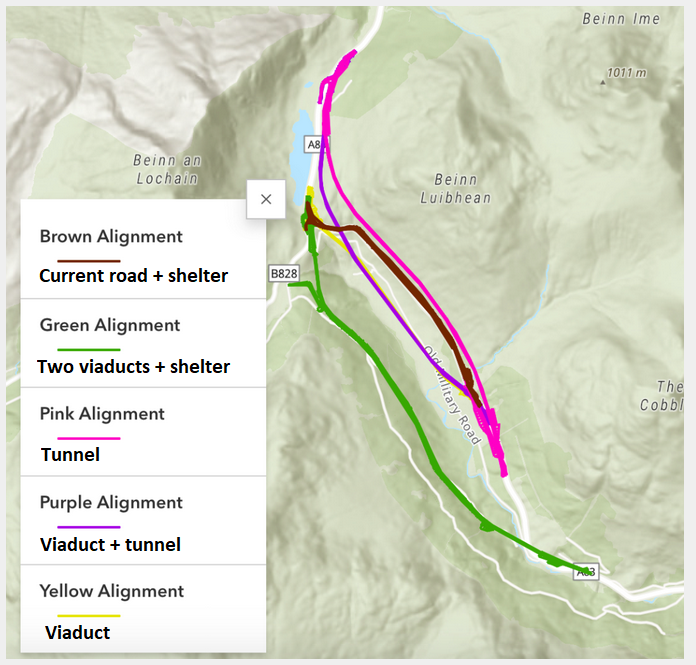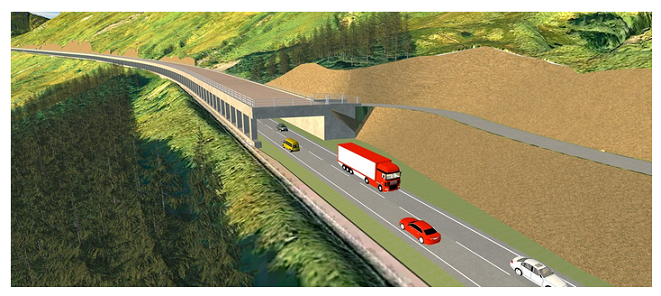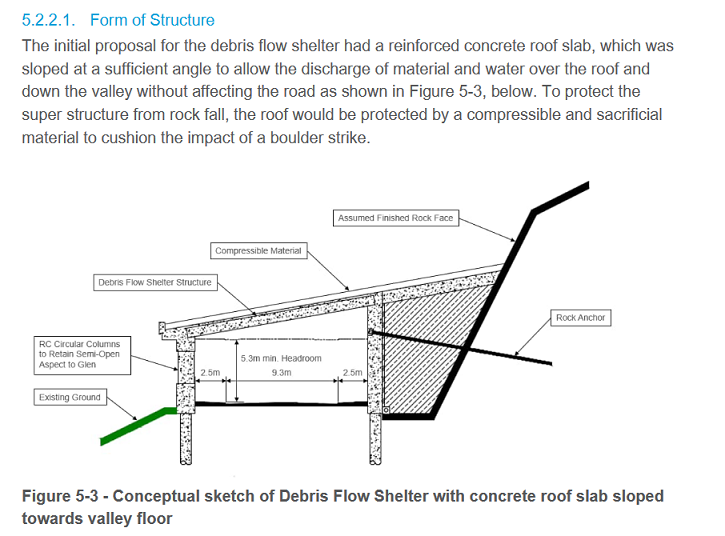Last week proposals to upgrade both the A83 and the A9 were in the news. None of the coverage mentioned that all of the A83 at the Rest and Be Thankful lies within the Loch Lomond and Trossachs National Park (LLTNP) or that much of the A9 lies within the Cairngorms National Park. This is the first of two post which consider the implications and looks at Transport Scotland’s proposals to address the landslip problems at the Rest and Be Thankful.

Three years ago and at significant cost Transport Scotland floated a number of radical alternatives to the current route taken by the A83 through Glen Croe, citing the apparently insuperable problems of preventing landslips there. The alternative route corridors (see here) were generally poorly received and many were pie in the sky. Under pressure from Argyll and Bute Council, Transport Scotland then returned to Glen Croe where it considered five options before announcing on 1st June (see here) that it wished to keep the current road after all but cover it with a debris shelter 1.4km long.

As local Councillor Shonny Paterson was reported as saying in the Lochside Press (see here):
“Three years ago engineers had dismissed following the existing road ‘out of hand’ as a solution to repeated landslides. The reason given then was the size of the rocks that could come down would damage a debris flow shelter, as these were designed more for avalanches in the Alps to prevent road closures, therefore would not be suitable for the Rest and Be Thankful……………So I will be interested to hear what has changed.”
Part of the answer to Cllr Paterson’s question is contained in the DMRB (Design Manual for Roads and Bridges) assessment report (see here) supporting Transport Scotland’s announcement. The report shows that the announcement was misleading and, as a result of the likely damage that would be caused by falling rocks, what is proposed is NOT the type of avalanche shelter commonly found in the Alps:

Instead, Transport Scotland is proposing rather a large catch pit and wall to protect the road from falling rocks, with the shelter designed provide additional protection in the case of very large landslips (there are an estimated 100,000 tonnes of glacial debris on the slopes of Beinn Luibhean which could potentially be released).

While section 5.11.2 of the report (page197) acknowledges that “Clearing of superficial deposits/rock fall from the catchpit/roof” and “Maintenance of the cushioning material on the roof and the sacrificial components of the protection wall” will be required, it is not explained how this will be done. Digging out a catch pit filled by a large landslip would be a major operation with implications for the use of the A83 at either end of the protection wall/shelter.
The preferred brown option does, however, make use of the catchpits that have been constructed above the A83 since 2017 – work that is still ongoing – and this has reduced its apparent cost:

In making cost comparisons it is also important to note that the brown and yellow options are considerably shorter in distance than the others. This means that sections of the A83 over the Rest and Be Thankful could still be left exposed to risk of landslips and closure, including that below the land still owned by Glen Croe farm which still being heavily grazed at public expense (see here). I have not yet been able to find an assessment of that risk in the report (it is 1300 pages long).
The assessment also fails to explain is why the costs of tunnelling – which would be far less prone to disruption while being constructed from further landslips and would avoid the need for traffic to be diverted for lengthy periods onto the Old Military Rd while the rock shelter was constructed – is so much more expensive than in Norway. For example, among major transport projects being undertaken by the Norwegian Public Roads Administration (see here) is the E16 and Vossebanen Arna-Stanghelle in 2024:
“The project involves the construction of a 36 km road tunnel and a 26 km railway tunnel, divided into three tunnel sections with tunnel lengths between 8 and 10 km. In this project, the road and railway tunnels will provide common solutions for evacuation in the event of fire and accidents. The existing road has a high risk of landslides, in addition to many traffic accidents. The cost estimate for the road development is NOK 1,4 billion Euro”.
That is c£1.2 billion for over 60 kilometres of tunnel (2021 prices) compared to £1,33 billion for a 3km tunnel under Beinn Luibhean!
A tunnel would also have far less impact on the landscape of Glen Croe than any of the other options Transport Scotland has considered. Just as they did with the plans to upgrade the A82 along Loch Lomond Transport Scotland have failed to assess the landscape implications of the various options (although there are visualisations in the report):

Instead, Transport Scotland will look at mitigating the landscape impact of their preferred option at the next stage. This, as Geoff Riddington argued in respect of the A82 (see here) is totally wrong. Just as with the A82, the Loch Lomond and Trossachs National Park Authority have been totally silent about the landscape implications of Transport Scotland’s proposals. As a result they have once again failed to fulfil their statutory duty to conserve the special landscapes of the area.
What needs to happen
It appears that for some time Transport Scotland may have believed that continuing with the current work to protect the A83 from landslips would be the most affordable option for Glen Croe. But with money in short supply, the various consultations required by the DMRB manual have conveniently enabled it to put off having to take a decision for three years.
How the Scottish Government will find the mouthwatering sum of £432m Transport Scotland now claims is required to complete the current works is unclear. That figure is supposed to include stand down time “during which major construction work cannot progress due to potential instability of the hill side” but since the brown option would appear particularly prone to such disruption, it also appears the option where costs are most likely to escalate.
Before allowing the catch pit/rock shelter option to proceed any further, the Scottish Government should seek independent advice from the Public Roads Administration authority in Norway who lead the world in tunnelling. That could provide a cheaper more effective option for the Rest and Be Thankful, which causes less disruption to continued use of the existing road during the construction period and at the same time protect the special qualities of the National Park.
For those who are interested and live locally, public exhibitions will be held in The Three Villages Hall, Arrochar, on Monday June 12 from 12 noon to 7pm and Tuesday June 13 from 10am to 5pm, as well as Lochgilphead Baptist Church Hall on Wednesday June 14 from 12 to 7pm and Thursday June 15 from 10am to 5pm.

2 Comments on “Trunk road upgrades and Scotland’s National Parks (1) – Transport Scotland’s plans for the Rest and Be Thankful”